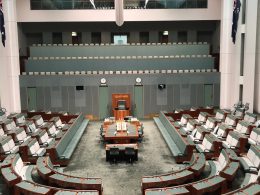The Impact of Inflation on Savings
Inflation is a crucial economic concept that refers to the general increase in prices and the subsequent decrease in the purchasing power of money. Its effects permeate various aspects of the economy, including individual savings. Understanding how inflation impacts savings is essential for both personal financial planning and broader economic policy formulation.

Understanding Inflation
Definition and Measurement
Inflation is typically measured using the Consumer Price Index (CPI) or the Producer Price Index (PPI). These indices track the price changes of a basket of goods and services over time. A rising CPI indicates increasing prices, signifying inflation. Central banks and governments monitor these indices to guide monetary policy.
Causes of Inflation
Inflation can be caused by various factors, including:
- Demand-pull inflation: When demand for goods and services exceeds supply.
- Cost-push inflation: When the costs of production increase, leading to higher prices for goods and services.
- Built-in inflation: When businesses increase prices to maintain profit margins amid rising costs, leading to a wage-price spiral.
Inflation and Savings
Erosion of Purchasing Power
Inflation erodes the purchasing power of money. For savers, this means that the value of their savings decreases over time if the interest earned does not outpace inflation. For example, if the inflation rate is 3% per year, a savings account with a 1% interest rate results in a net loss in real terms.
Impact on Real Interest Rates
Real interest rates are nominal interest rates adjusted for inflation. If nominal rates are lower than the inflation rate, real interest rates are negative, which discourages saving and encourages spending. For instance, if a bank offers a 2% interest rate on a savings account while inflation is 3%, the real interest rate is -1%.
Behavioral Responses to Inflation
Shift to Higher-Yield Investments
To combat the erosion of savings, individuals often shift their investments from low-yield savings accounts to higher-yield assets such as stocks, bonds, real estate, or commodities. These assets often provide returns that outpace inflation, preserving or even increasing the real value of savings.
Image by Pexels.com
Increased Consumption
In some cases, inflation can lead to increased immediate consumption. When individuals expect future prices to be higher, they may prefer to spend their money now rather than save, exacerbating demand-pull inflation.
Strategies to Mitigate Inflation’s Impact on Savings
Diversification
Diversifying investments across various asset classes can help mitigate the risk posed by inflation. A balanced portfolio that includes stocks, bonds, real estate, and commodities is more likely to offer returns that outpace inflation over the long term.
Inflation-Protected Securities
Investing in inflation-protected securities, such as Treasury Inflation-Protected Securities (TIPS) in the United States, can safeguard savings. TIPS are designed to increase in value with inflation, ensuring that the purchasing power of the investment is maintained.
Real Assets
Real assets, such as real estate and commodities, often appreciate with inflation. Investing in these assets can provide a hedge against inflation, as their value typically rises along with general price levels.
Comparative Analysis: Savings Options in an Inflationary Environment
Savings Accounts vs. Stocks
| Aspect | Savings Accounts | Stocks |
| Inflation Impact | Negative real returns if interest rates are lower than inflation | Potential for high returns that outpace inflation |
| Risk Level | Low | High |
| Liquidity | High | Medium to High |
| Income Generation | Interest | Dividends and capital gains |
Bonds vs. Real Estate
| Aspect | Bonds | Real Estate |
| Inflation Impact | Inflation can erode fixed interest payments | Generally appreciates with inflation |
| Risk Level | Low to Medium | Medium to High |
| Liquidity | High for government bonds, low for corporate bonds | Low |
| Income Generation | Interest | Rental income and capital appreciation |
Analysis Table: Inflation’s Impact on Different Savings Vehicles
| Savings Vehicle | Risk Level | Return Potential | Inflation Protection | Liquidity | Typical Use |
| Savings Accounts | Low | Low | Poor | High | Emergency fund |
| Treasury Bonds | Low | Low to Medium | Moderate (TIPS) | High | Safe investment |
| Corporate Bonds | Medium | Medium | Low to Moderate | Low to Medium | Income generation |
| Stocks | High | High | Good | Medium to High | Long-term growth |
| Real Estate | Medium to High | High | Good | Low | Wealth building |
| Commodities | High | High | Good | Low | Hedge against inflation |
Conclusion
Inflation has a profound impact on savings, primarily by eroding purchasing power and affecting real interest rates. Savers must adopt strategies to mitigate these effects, such as diversifying their portfolios, investing in inflation-protected securities, and considering real assets. A well-thought-out approach can help maintain the real value of savings and ensure financial stability in an inflationary environment. Understanding the dynamics of different savings vehicles and their performance in the face of inflation is crucial for effective financial planning.












